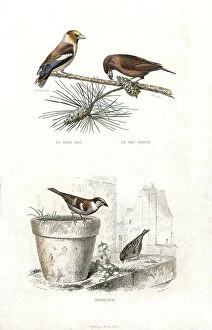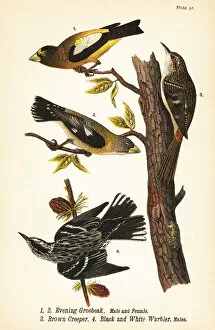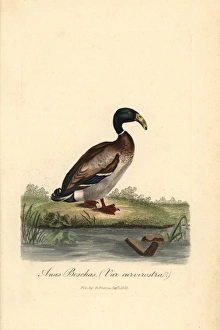Curvirostra Collection
Curvirostra, a genus of birds that includes various species such as the Red Crossbill (Loxia curvirostra), Dutch hookbill duck (Anas boschas var curvirostra
All Professionally Made to Order for Quick Shipping
Curvirostra, a genus of birds that includes various species such as the Red Crossbill (Loxia curvirostra), Dutch hookbill duck (Anas boschas var curvirostra), Evening grosbeak, brown creeper, black and white warbler, Woodcock, red crossbill, and black skimmer. These fascinating creatures captivate with their unique features and behaviors. The Red Crossbill is known for its distinctive crossed bill that allows it to extract seeds from conifer cones. With its specialized beak adapted for this purpose, it can access food sources that other birds cannot reach. This adaptation has led to different subspecies across Europe and North America. In Germany, one can find the Common Crossbill (Loxia curvirostra ssp curvirostra). Juvenile individuals of this species are classified as Type B Bohemian Crossbills due to their distinct characteristics. Their bills are perfectly designed for extracting seeds from pinecones. Observing these birds in their natural habitats offers a glimpse into their diverse lifestyles. From the dense forests where they search for sustenance to open waters where they glide gracefully on the surface or dive underwater like the black skimmer. Their vibrant plumage adds beauty to any landscape they inhabit. Whether it's the striking red hues of the Red Crossbill or the colorful patterns found on other members genus like Evening grosbeaks or black and white warblers. Birdwatchers often marvel at their ability to adapt to different environments across continents. The Curvirostras' resilience enables them to thrive in various climates and ecosystems worldwide. As we appreciate these avian wonders through photographs like Picture No. 10899283 or identification numbers such as 10938918, we gain a deeper understanding of their importance in our ecosystem. They play crucial roles in seed dispersal while also serving as indicators of forest health due to their reliance on coniferous habitats.

















